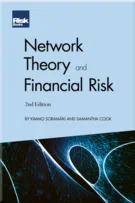Implementing IFRS 9 by Adapting AIRB Models
Introduction
Environmental Forces: Economic Instability, Low Interest Rates, Change in Demographics, Continuing Regulatory Changes and Digital Evolution
Current Practices and their Shortcomings in Risk, Capital, Business-mix and Performance Management
Evolution of Economic Capital Measurement and Management
Integrated Capital Management: ICAAP and ORSA
Procyclicality Management: Developing a Coherent Risk Rating Framework for Risk Management, Capital Management, Stress Testing and IFRS 9 Purposes
Capital Optimisation and Business-mix Management
Performance, Profitability Management and Hurdle Rate
Optimal Management of the Interest Rate Risk in the Banking Book
Prudent LGD Estimation for Mortgages
Developing and Implementing Effective Fintech Strategies
Implementing IFRS 9 by Adapting AIRB Models
Organisational (Re)alignment
IFRS 9 implementation is a very significant effort for the banks globally. A key element of IFRS 9 is a forward-looking “expected credit loss” (ECL) impairment model, which represents a paradigm shift from the existing incurred loss model which is subject to a considerable degree of subjectivity and judgement. In this chapter, we will examine how to adapt the AIRB models in the estimation of ECL for IFRS 9 purposes. By leveraging the AIRB models, banks can lessen their modelling efforts significantly in estimating ECL under IFRS 9. We demonstrate the necessary model adaptations required and provide detailed examples.
Given the similarities between ECL and the credit risk measures under the AIRB, a pragmatic solution is for banks to leverage their well-established credit risk stress-testing models under AIRB to also satisfy the IFRS 9 modelling needs. This is what we will focus on this section. More specifically, we adapt the AIRB PD, LGD and EaD models for IFRS 9 use, and show how we can arrive at ECL by integrating the PD, LGD, and EaD parameters obtained from these models. To ensure the expected loss measure can reflect the current state of the economy and business cycle, the
Copyright Infopro Digital Limited. All rights reserved.
As outlined in our terms and conditions, https://www.infopro-digital.com/terms-and-conditions/subscriptions/ (point 2.4), printing is limited to a single copy.
If you would like to purchase additional rights please email info@risk.net
Copyright Infopro Digital Limited. All rights reserved.
You may share this content using our article tools. As outlined in our terms and conditions, https://www.infopro-digital.com/terms-and-conditions/subscriptions/ (clause 2.4), an Authorised User may only make one copy of the materials for their own personal use. You must also comply with the restrictions in clause 2.5.
If you would like to purchase additional rights please email info@risk.net









